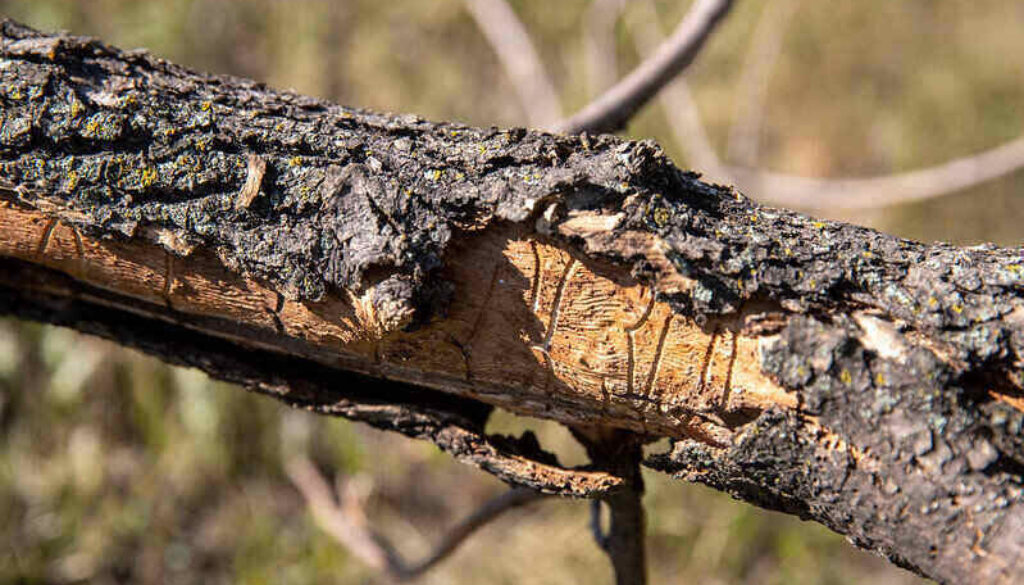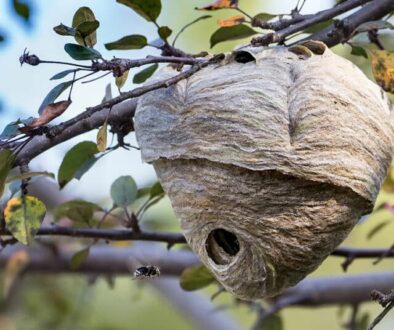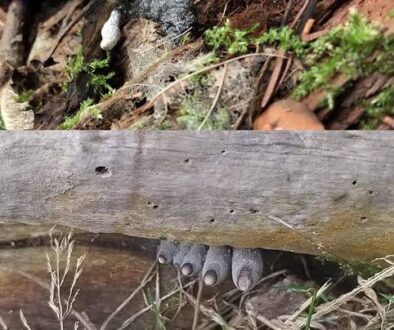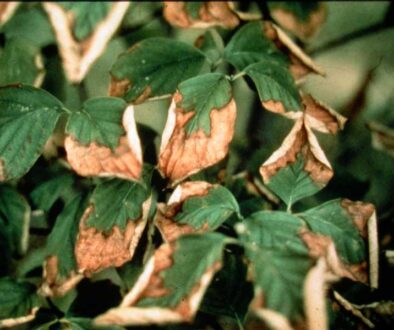Ash Tree Diseases
Ash Tree Diseases: An Identification and Management Guide
Ash trees are a familiar sight in many landscapes. Regrettably, these trees are increasingly vulnerable to several pests and Ash Tree diseases that can cause severe harm or even death. In this article, we’ll cover the most common diseases and pests that harm ash trees, their symptoms, warning signs, and—most importantly—treatment and prevention methods. By being aware of these diseases and pests, you can safeguard the vitality and health of your Ash trees.
Ash Tree Diseases
Ash trees are vulnerable to various diseases and pests, each with its symptoms and potential for damage. The principal illnesses and pests we will examine are as follows:
- Emerald Ash Borer (EAB): A highly destructive invasive insect that attacks and kills ash trees.
- Ash Anthracnose: A fungal disease that affects the leaves, twigs, and branches of ash trees.
- Ash Yellows: A viral illness that reduces the resilience and health of trees
- Ash Rust: A fungal disease characterized by visible rust-colored growth on leaves, stems, or branches.
- Root Rot: A condition caused by various fungi affecting the roots of ash trees.
- Banded Ash Borer: A wood-boring beetle that can cause severe damage to ash trees.
- Verticillium Wilt Disease: A soil-borne fungal disease that affects the vascular system of ash trees.
Common Symptoms and Signs
For efficient treatment and early diagnosis of ash tree diseases and pests, it is essential to recognize their indications and symptoms. Wood-boring pests such as banded ash borers and emerald ash borers can be identified by small holes in the bark, galleries in the wood, and increased damage from woodpeckers. Although trees under stress from pests can sometimes weaken and develop yellow leaves, discolored or yellowing foliage are frequently a sign of fungal or viral illnesses. Mushrooms at the base of the tree signal root rot, which also wilts the leaves and inhibits the growth of the tree. As a tree ages, damage from diseases and pests can cause defoliation and branch dieback. Ash trees can be saved if these symptoms are identified early, because severely sick or infested trees are difficult to treat successfully, often ending in removal.
Let’s now examine the harm that these illnesses produce as well as ways to prevent them.
Emerald Ash Borer (EAB)
Symptoms and Signs:
D-shaped exit holes: About 1/8 inch in diameter, left by emerging adult borers.
S-shaped galleries: Underneath the bark, created by larval feeding.
Thinning canopy: Foliage at the top of the tree becomes sparse and yellow.
Vertical bark splits: On the trunk as the infestation progresses.
Damage:
By feeding on the inner bark of ash trees and interfering with the movement of water and nutrients, Emerald Ash Borers inflict significant damage. When trees don’t get enough water or nutrients, they begin to revert. Dead trees weaken and become brittle, which increases the chance of failure and causes harm to nearby persons and property.
Prevention and Treatment:
Specific insecticides can protect ash trees from EAB infestation. Please Ask about our Plant Health Care PHC
Infested trees should be promptly removed and destroyed to stop the spread of the infection.
Ash Anthracnose Disease
Symptoms and Signs:
Irregular leaf spots: Dark, water-soaked lesions on leaves, often with a purplish border.
Premature defoliation: Leaves drop early, weakening the tree and affecting overall health.
Twig dieback: Dying and blackening of smaller branches.
Damage:
Ash Anthracnose affects the leaves, leading to reduced photosynthesis and weakening of the tree.
Prevention and Treatment:
Fungicides: Regular applications of fungicides can help manage anthracnose, especially during wet seasons.
Proper Pruning: Prune affected branches to improve air circulation and reduce disease severity.
Fertilization and Plant Tree Health Care PHC: Ensure proper nutrients and care to strengthen the tree’s resistance.
Ash Yellows
Symptoms and Signs:
Yellowing and wilting of foliage: Particularly evident in the upper crown.
Stunted growth: Reduced leaf size and overall growth vigor.
Thicker, darker bark: May crack or split as the disease progresses.
Damage:
Ash yellow is a viral disease that weakens trees, impacting growth and liveliness.
Prevention and Treatment:
Regular Monitoring: Inspect trees for symptoms and promptly remove infected trees.
Proper Soil Management: Maintain well-drained soil and avoid compacting the root zone.
Ash Rust
Symptoms and Signs:
Small, elevated structures on leaves, stems, or branches are indicative of rust-colored growth.
Flow that is yellow-orange and visible on the undersides of leaves.
Curling and deformation of the leaves: Unusual growth brought on by the infection
Damage:
Ash rust weakens the tree by affecting leaf function and causing defoliation.
Prevention and Treatment:
Fungicides: Apply fungicides to control rust outbreaks during the growing season.
Leaf Removal and Pruning: Remove and destroy affected leaves to minimize disease spread.
Promote Tree Vigor: Maintain tree health through proper watering, fertilization, and pruning.
Root Rot
Symptoms and Signs:
Reduced growth: Trees may appear stunted or smaller than expected.
Yellowing and wilting leaves: Despite adequate water, leaves may droop and yellow.
Mushrooms near the tree’s base: Fruiting bodies of the root rot fungi.
Damage:
The root system is impacted by root rot, which makes it more difficult for the tree to absorb nutrients and water.
Prevention and Treatment:
Maintain enough drainage to avoid soggy soil, which serves as a haven for the growth of root rot.
Maintaining the health of the soil will lessen tree stress and promote root growth. When mulching trees, avoid “volcano mulching,” which involves heaping mulch up against the trunk to retain moisture and draw fungi.
If your tree is planted in an area prone to root rot, preventative applications of fungicide can be beneficial. After root rot has set in, success rates of fungicide applications are very low.
Banded Ash Borer
Symptoms and Signs:
Serpentine (S-shaped) galleries: Channels from larvae just beneath the bark.
Banding patterns on bark: Larval feeding marks that resemble bands.
Woodpecker damage: Pecking holes to access larvae, indicating infestation.
Damage:
Banded Ash Borers damage ash trees by tunneling through the wood, weakening the structure.
Prevention and Treatment:
Preventive Insecticides Plant health care PHC: Apply insecticides to protect the tree from borer infestations. Utilize trunk injection or systemic insecticides to target borers effectively.
Pruning and Tree Inspection: Regularly inspect the tree for signs of infestation and prune affected branches.
Verticillium Wilt Disease
Symptoms and Signs:
Wilting and yellowing leaves: Typically on one side or branch of the tree.
Brown streaks in the sapwood: Visible when infected branches are cut open.
Sudden dieback of branches: Portions of the tree or entire branches may die off rapidly.
Damage:
Verticillium wilt affects the vascular system, inhibiting water and nutrient transport. Without water and nutrients, the tree cannot survive.
Prevention and Treatment:
Fungicide Applications: Apply appropriate fungicides to manage the disease, especially in the early stages.
Maintain Tree Health: Optimal care, including proper irrigation and fertilization, can help trees resist infection.
When to Call a Professional
Seek advice from a qualified tree care specialist if you notice significant signs of a widespread infestation or are unclear about the best course of action for treating diseases affecting ash trees. We at Johnson Ops Tree Care have the knowledge and resources necessary to correctly identify problems, suggest suitable solutions, and put precautions in place to maintain the health of your ash trees. You can safeguard your ash trees and guarantee their longevity in your landscape by adhering to these recommendations and taking quick action to eliminate any signs of disease or pests. Please inquire if you need any information or if you have any questions




